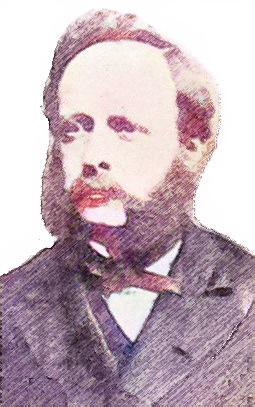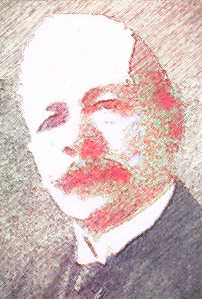Archive : Article / Volume 2, Issue 1
- Research Article | DOI:
- https://doi.org/10.58489/2836-8851/010
The second case of Bardet-Biedl syndrome from Iraq: An educational article and expert opinion
1 Advisor in Pediatrics and Pediatric Psychiatry, Children Teaching Hospital of Baghdad Medical City and the National Training and Development Center.
Aamir Jalal Al-Mosawi
Aamir Jalal Al-Mosawi, (2023). The second case of Bardet-Biedl syndrome from Iraq: An educational article and expert opinion. Neurons and Neurological Disorders. 2(1). DOI: 10.58489/2836-8851/010
© 2023 Aamir Jalal Al-Mosawi, this is an open access article distributed under the Creative Commons Attribution License, which permits unrestricted use, distribution, and reproduction in any medium, provided the original work is properly cited.
- Received Date: 01-03-2023
- Accepted Date: 06-03-2023
- Published Date: 09-03-2023
bardet-biedl syndrome; Iraq; evidence-based therapies; expert opinion
Abstract
Background: Bardet-Biedl syndrome and Laurence-Moon syndrome are rare autosomal recessive disorders with a similar phenotype. They are characterized by the gradual development of phenotype which includes cone-rod retinal dystrophy, obesity, and hypogonadism in males. Other associated abnormalities include learning disability and renal abnormalities. The two conditions are differentiated clinically by the presence of spasticity and the absence of polydactyly in Laurence-Moon syndrome. In 2002, we reported the first patient with Bardet-Biedl syndrome. The boy had polydactyly, obesity, retinal degeneration, and was hospitalized at the University Hospital in Al-Kadhimiyia because of the development of chronic renal failure.
Patients and methods: The case of a 9-year-old obese Kurdish girl who had polydactyly of the hands and feet associated with reduced visual acuity is described.
Results: A 9-year-old obese Kurdish girl had polydactyly of the hand and feet associated with reduced visual acuity that was attributed to myopia which was partially corrected with eye glasses. The parents were unrelated, and her younger 5-year sister had polydactyly of the feet only. No other family member known to have polydactyly. Both sisters had their extra-digits removed surgically. The girl was studying at fourth grade primary school and the parents reported no learning disability. Fundoscopy showed normal optic disc and periphery of the retina. The presence of retinitis pigmentosa was excluded. However, the foveal reflex was reported to be abnormal by the oophthalmologist. Electroretinography showed evidence of cone-rod dystrophy.
Conclusion: The second case of Bardet-Biedl syndrome from Iraq is reported. The current evidence-based expert opinion suggests the use of long tem supplementation of citicoline, co-enzyme Q10 and lutein with hope of retarding the progression to blindness.
Introduction
Bardet-Biedl syndrome and Laurence-Moon syndrome are rare autosomal recessive disorders with a similar phenotype. They are characterized by the gradual development of phenotype which includes cone-rod retinal dystrophy, obesity, and hypogonadism in males. Other associated abnormalities include learning disability and renal abnormalities.
The two conditions are differentiated clinically by the presence of spasticity and the absence of polydactyly in Laurence-Moon syndrome [1-6].
In 2002, we reported the first patient with Bardet-Biedl syndrome. The boy had polydactyly, obesity, retinal degeneration, and was hospitalized at the University Hospital in Al-Kadhimiyia because of the development of chronic renal failure.
Patients and methods
The case of a 9-year-old obese Kurdish girl who had polydactyly of the hands and feet associated with reduced visual acuity is described.
Results
A 9-year-old obese Kurdish girl had polydactyly of the hand and feet associated with reduced visual acuity that was attributed to myopia which was partially corrected with eye glasses. The parents were unrelated, and her younger 5-year sister had polydactyly of the feet only. No other family member known to have polydactyly. Both sisters had their extra-digits removed surgically.
The girl was studying at fourth grade primary school and the parents reported no learning disability.
Urinalysis and renal functions showed no abnormality.
Ophthalmological examination was performed to confirm the suspected diagnosis of Laurence-Moon-Bardet-Biedl syndrome.
Fundoscopy showed normal optic disc and periphery of the retina. The presence of retinitis pigmentosa was excluded. However, the foveal reflex was reported to be abnormal by the oophthalmologist.
Therefore, electroretinography was performed bases on the early emphasis of Prosperi and colleagues on the value of electroretinography in the early diagnosis of the Laurence-Moon-Bardet-Biedl syndrome by showing evidence of retinal degeneration that is not always identified by ophthalmoscopy during childhood [5].
Electroretinography showed evidence of cone-rod dystrophy.
The parents were very anxious because the ophthalmologist informed them that the child will become blind in the future. They requested the use of possible preventive therapies to preserve her vision. Therefore, safe evidences-based therapies were recommended.
We recommended a preventive therapeutic approach including citicoline (An initial one-month course of intramuscular citicoline followed long-term citicoline eye drops or oral citicoline), long term supplementation of co-enzyme Q10 and lutein based on the evidence provided by Mao and colleagues (2016), Parravano et al (2020), Zhang et al (2017), and Bahrami colleagues (2006) [7,8,9,10].
Discussion
Bardet-Biedl syndrome and Laurence-Moon syndrome are rare autosomal recessive disorders with a similar phenotype.
Laurence-Moon syndrome was first described in 1866 by John Zachariah Laurence (Figure-1A) and Robert Charles Moon (Figure-1B). They described 4 patients from the same family who had developmental delay associated with retinitis pigmentosa.


Bardet-Biedl syndrome was named after French and Hungarian physicians who suggested that the condition is a distinct clinical entity during the 1920s.
Georges Louis Bardet was a French medical student at the University of Paris in 1920. He reviewed in his medical degree thesis the previously reported cases associated with obesity, retinitis pigmentosa and polydactyly including the cases of Darier in 1887, De Cyon in 1889, Marguerite Catt in 1914, and other cases. Marguerite Catt described a 39-year patient with polydactyly, mental retardation, obesity, retinitis pigmentosa, hypogonadism.
In addition, Bardet described a case of an obese child with hexadactyly and retinitis pigmentosa, and called the syndrome adiposo-genital dystrophy [2].
In 1922, Arthur Bield (Figure-2) described the condition in two sisters.

In 2005, Susan J Moore from Canada and her research team reported a clinical genetic and epidemiology study of Bardet-Biedl syndrome, and emphasized that Bardet-Biedl syndrome and Laurence-Moon syndrome are two disorders with a similar phenotype. They are characterized by the gradual development of phenotype which includes cone-rod retinal dystrophy, obesity, and hypogonadism in males. Other associated abnormalities include learning disability and renal abnormalities. The two conditions are differentiated clinically by the presence of spasticity and the absence of polydactyly in Laurence-Moon syndrome [4].
For this patient, we recommended a preventive therapeutic approach including citicoline (An initial one-month course of intramuscular citicoline followed long-term citicoline eye drops or oral citicoline), long term supplementation of co-enzyme Q10 and lutein based on the evidence provided by Mao and colleagues (2016), Parravano et al (2020), Zhang et al (2017), and Bahrami colleagues (2006) [7,8,9,10].
Mao and colleagues (2016) reported an experimental study which showed that citicoline can help in retarding myopia progression in guinea pigs [7[.
Parravano et al (2020) reported a study which showed that citicoline and vitamin B12 eye drops have a protective effect against functional impairment and neuro-retinal degeneration in mild diabetic retinopathy [8].
Zhang et al (2017) reviewed the literature and emphasized the presence of a good evidence suggesting a therapeutic potential of Co-enzyme Q10 in a variety if retinal diseases including retinitis pigmentosa. They attributed the beneficial therapeutic effect to inhibition of reactive oxygen species generation and protecting neuro-retinal cells from oxidative damage [9].
Bahrami colleagues (2006) reported a placebo-controlled study which showed that lutein supplementation can has a beneficial effect in retinitis pigmentosa and may improve visual field and also possibly improve visual acuity [10].
Conclusion
The second case of Bardet-Biedl syndrome from Iraq is reported. The current evidence-based expert opinion suggests the use of long tem supplementation of citicoline, co-enzyme Q10 and lutein with hope of retarding the progression to blindness.
Conflict of interest: None.
References
- Laurence J, Moon RC. (1866). Four cases of retinitis pigmentosa occurring in the same family accompanied by general imperfection of development. Ophthalmic Rev; 2:32-41.
- Georges B. (1920). Sur un syndrome d'obésité infantile avec polydactylie et rétinite pigmentaire (contribution à l'étude des formes cliniques de l'obésité hypophysaire). Paris: Université de Paris.
- Biedl A. (1630). Ein Geschwisterpaar mit adiposo-genitaler Dystrophie. Deutsche Medizinische Wochenschrift 1922 (48).
- Moore SJ, Green JS, Fan Y, Bhogal AK, Dicks E, Fernandez BA, Stefanelli M, Murphy C, Cramer BC, Dean JC, Beales PL, Katsanis N, Bassett AS, Davidson WS, Parfrey PS. (2005). Clinical and genetic epidemiology of Bardet-Biedl syndrome in Newfoundland: a 22-year prospective, population-based, cohort study. Am J Med Genet A. 2005 Feb 1; 132A (4):352-60.
- Prosperi L, Cordella M, Bernasconi S. (1977). Electroretinography and diagnosis of the Laurence-Moon-Bardet-Biedl syndrome in childhood. J Pediatr Ophthalmol 1977 Sep-Oct; 14(5):305-8.
- Al-Mosawi AJ. (2002). The etiology of chronic renal failure in 54 Iraqi children. Pediatr Nephrol 2002 Jun; 17(6):463-4.
- Mao J, Liu S, Fu C. (2016). Citicoline retards myopia progression following form deprivation in guinea pigs. Exp Biol Med (Maywood) 2016 Jun; 241(11):1258-63.
- Parravano M, Scarinci F, Parisi V, Giorno P, Giannini D, Oddone F, Varano M. (2020). Citicoline and Vitamin B12 Eye Drops in Type 1 Diabetes: Results of a 3-year Pilot Study Evaluating Morpho-Functional Retinal Changes. Adv Ther 2020 Apr; 37(4):1646-1663.
- Zhang X, Tohari AM, Marcheggiani F, Zhou X, Reilly J, Tiano L, Shu X. (2017). Therapeutic Potential of Co-enzyme Q10 in Retinal Diseases. Curr Med Chem; 24(39):4329-4339.
- Bahrami H, Melia M, Dagnelie G. (2006). Lutein supplementation in retinitis pigmentosa: PC-based vision assessment in a randomized double-masked placebo-controlled clinical trial [NCT00029289]. BMC Ophthalmol 2006 Jun 7; 6:23.


